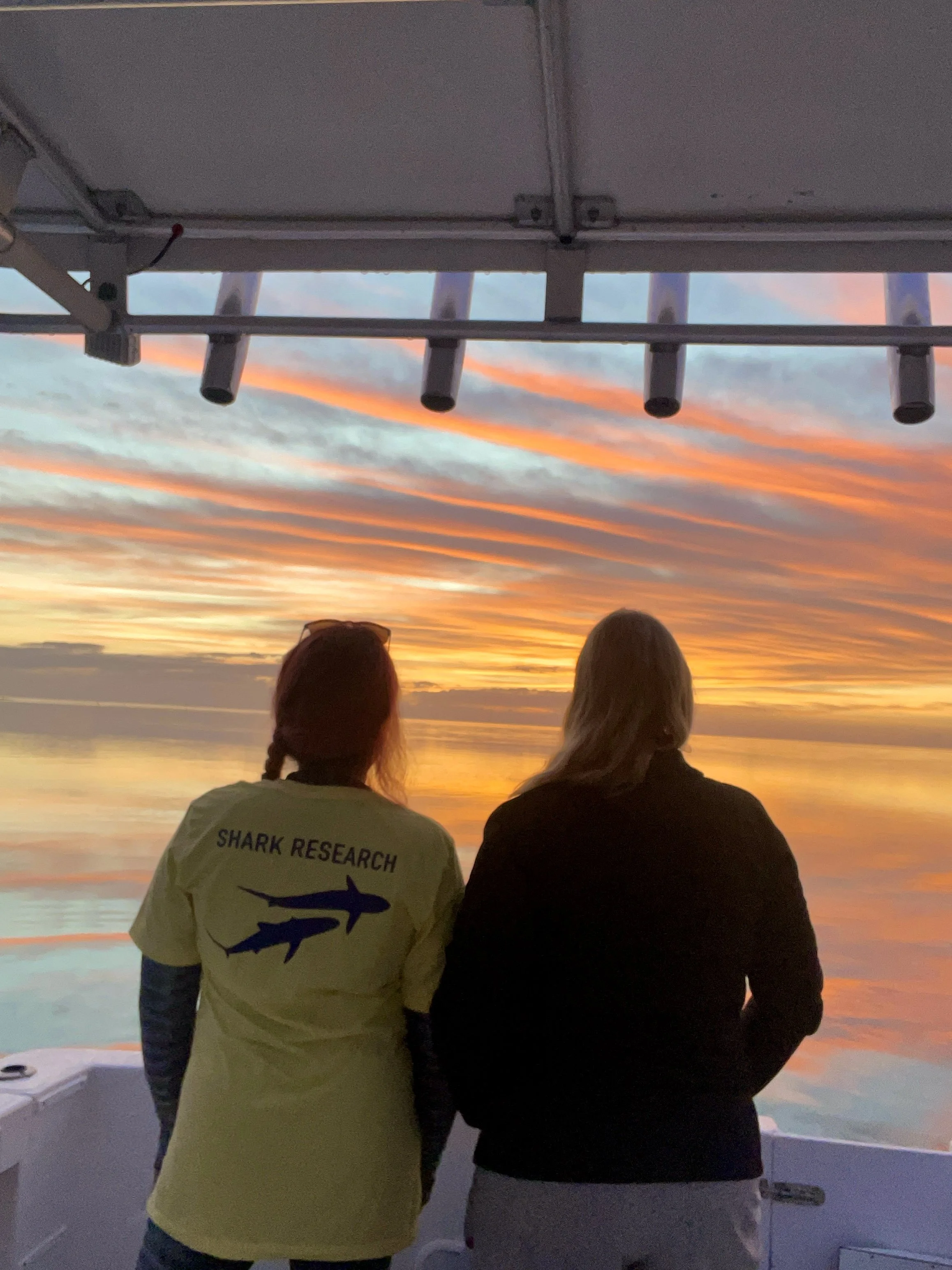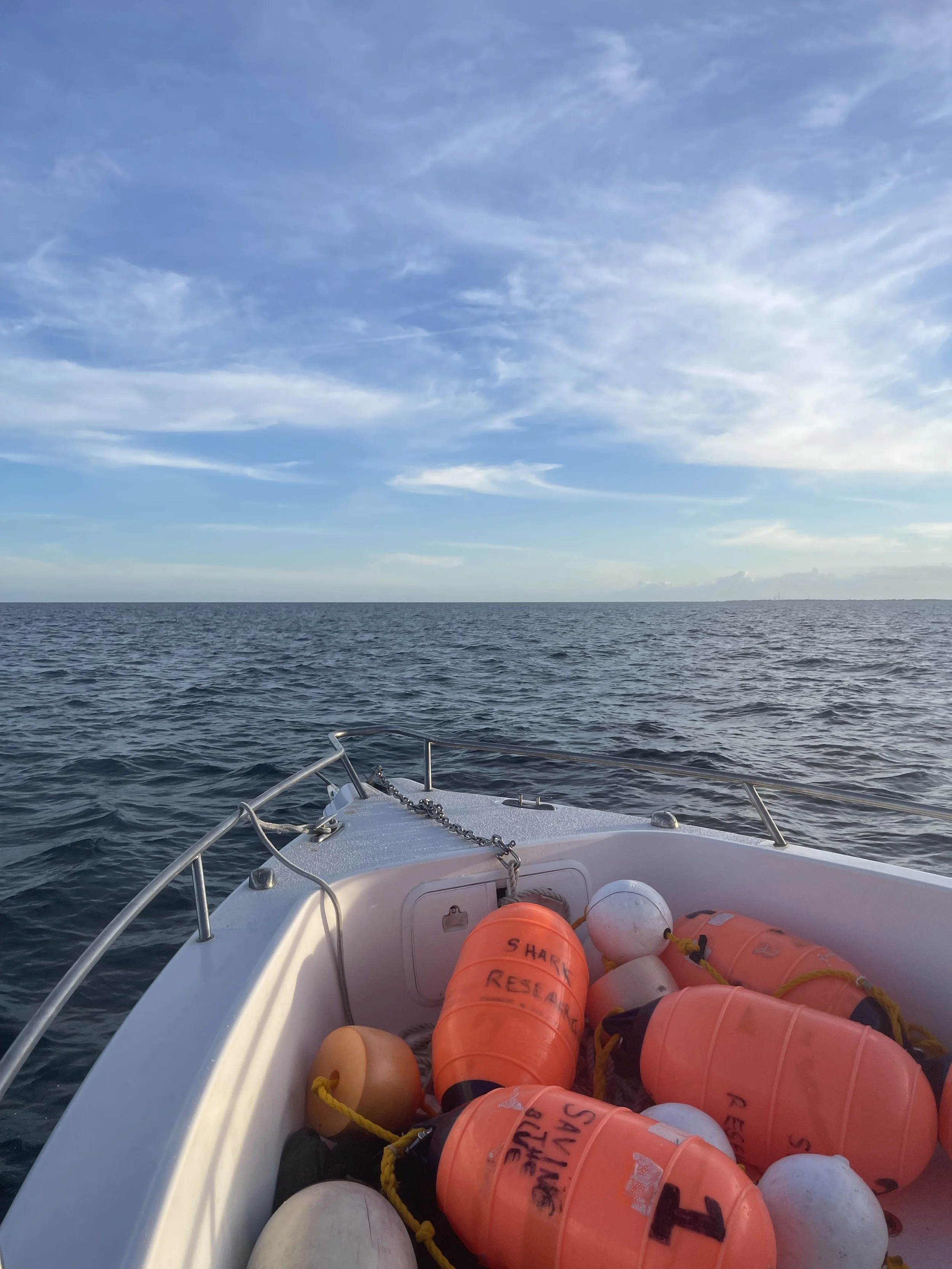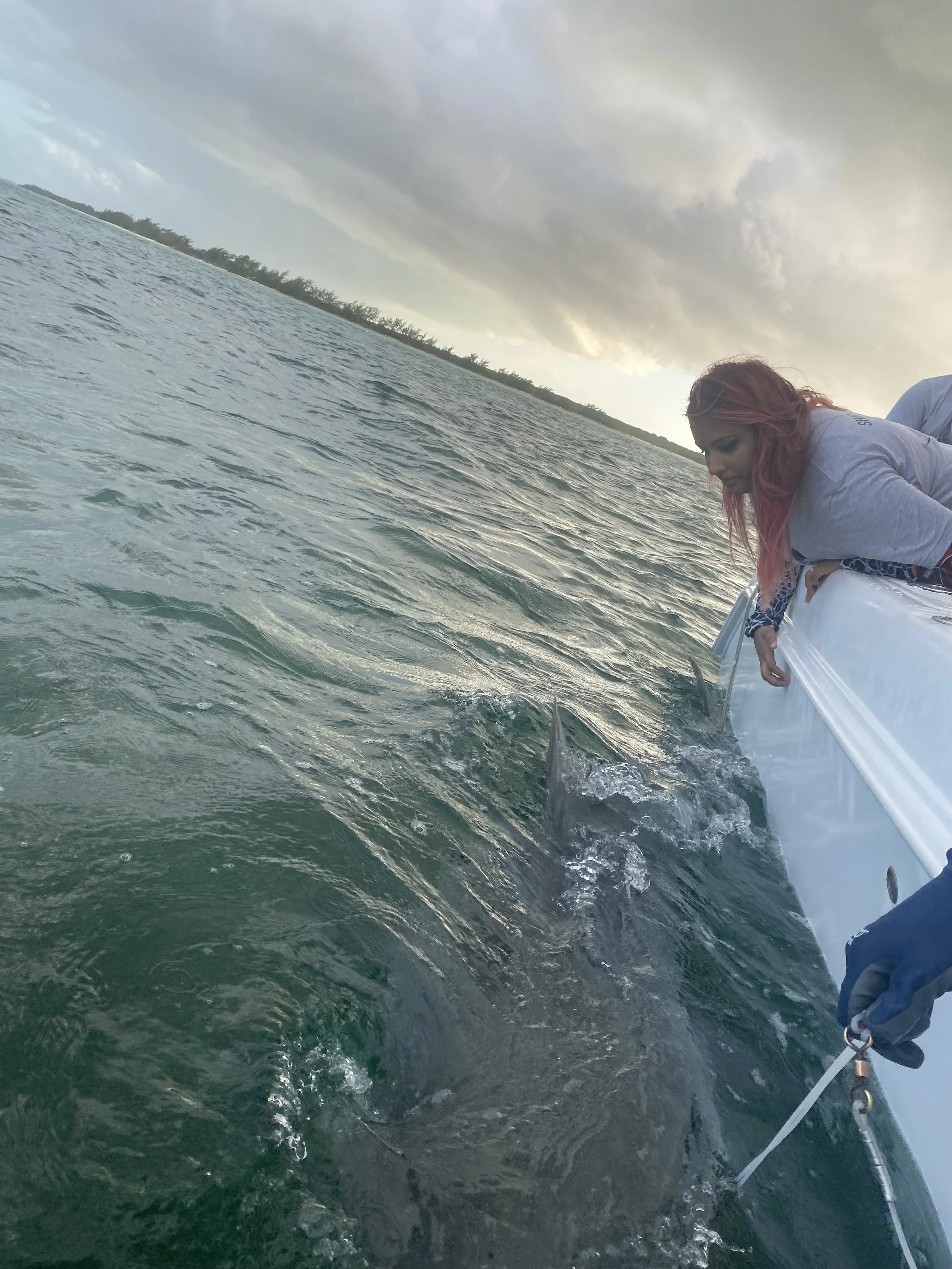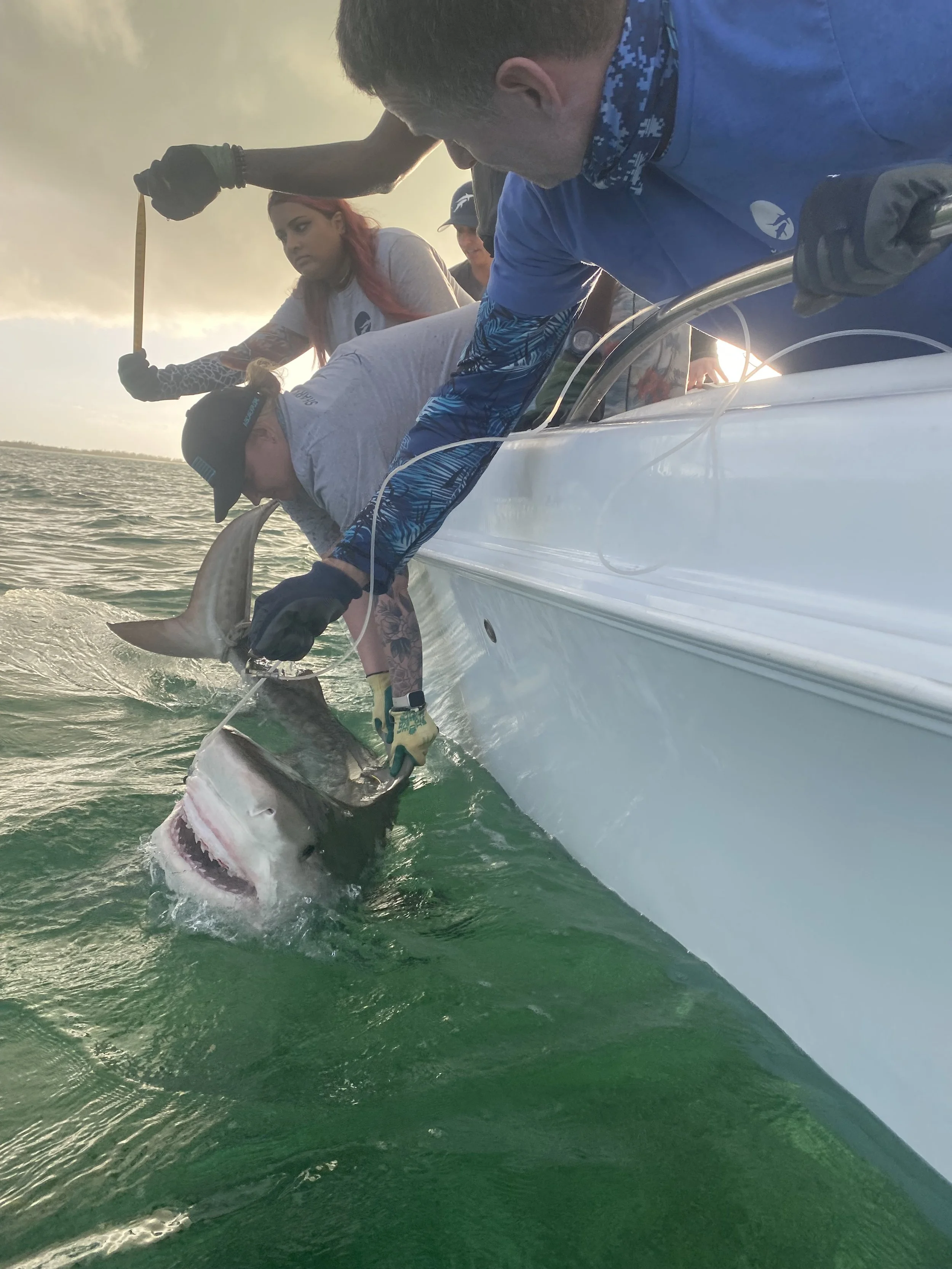Field Notes: A Day in the Life of a Shark Researcher
Shark researcher on a boat
Science, Salt, and Sharks
Marine biology looks glamorous on Instagram — turquoise waters, sun-drenched boats, and incredible wildlife encounters. But what’s it really like to be a shark researcher? The truth is, a day in the field is a mix of early mornings, heavy lifting, meticulous data collection, and moments of awe that make every challenge worth it.
If you’ve ever wondered what it’s like to step into the boots (and sometimes hip waders) of a shark researcher, here’s a behind-the-scenes look.
Morning Prep: Before the Sun Rises
The day begins early — usually before dawn. Field research runs on the tides, weather, and shark activity, so schedules are built around nature, not convenience.
What happens first:
Gear checks: lines, tags, sampling kits, gloves, and coolers for biological samples.
Safety briefings: handling protocols, emergency procedures, and crew roles.
Boat launch: loading everything onto the vessel, sometimes in the dark with only headlamps guiding the way.
Coffee helps. So does excitement.
Two shark researches staring at the sunrise
On the Water: Setting the Lines
Once the team reaches the study site — often near seagrass meadows, estuaries, or reefs — it’s time to set baited drumlines or longlines.
These lines aren’t for sport; they’re research tools designed to catch sharks safely. Each line is carefully placed, checked frequently, and monitored to minimize stress to the animals.
During this stage, researchers also record environmental data: water temperature, salinity, dissolved oxygen, and GPS coordinates. These factors help scientists understand shark habitats and behavior.
The Catch: Controlled Chaos
When a shark is hooked, the atmosphere changes instantly. The team springs into action:
Bringing the shark alongside the boat or onto a submerged platform.
Ensuring water continues to flow over the shark’s gills for oxygen.
Assigning each crew member to their role: one handles the animal, another records data, and another collects samples.
This is the heart-pounding moment most people picture — but it’s also the most carefully controlled. Shark welfare comes first.
Bringing the shark to the side of the boat
Data Collection: Science in Action
Every shark encounter is an opportunity to gather information that might otherwise take years to collect. Common procedures include:
Measuring length and girth.
Tagging for future identification and satellite tracking.
Collecting small tissue, blood, or muscle samples.
Checking sex, maturity, and health condition.
Each sample tells a bigger story: what the shark eats, where it migrates, how it responds to environmental stress, and how populations are changing over time.
Shark workup
Logging the Details: Notebooks and Numbers
After the shark is released — always safely and as quickly as possible — the team gets back to work in another way: writing everything down.
Meticulous data recording is the backbone of science. Every measurement, sample ID, environmental note, and GPS coordinate is logged immediately to ensure accuracy. Later, this data will be analyzed in labs and entered into global shark databases.
Biologist capturing data
Challenges in the Field
A day with sharks isn’t always smooth sailing. Researchers face:
Sudden weather shifts.
Seasickness and long hours in the sun.
Equipment failures or tangled lines.
Days with no sharks at all (patience is a must!).
But every challenge builds resilience — and makes the successful encounters even sweeter.
The Payoff: Why It’s Worth It
Despite the long days and unpredictable conditions, shark research is deeply rewarding. Every sample adds to conservation knowledge. Every tag placed helps scientists understand migration routes. Every encounter helps shift public perception from fear to respect.
Fieldwork is where science meets passion — and where small data points become part of a global story about ocean health.
Hammerhead swimming across the ocean floor
How You Can Get Involved
You don’t need to be a marine biologist to support shark research. Here are a few ways to contribute:
Citizen science: Join beach cleanups, record shark sightings, or help with water quality monitoring.
Eco-tourism: Choose shark dives with ethical operators that support conservation.
Education: Share shark facts with kids, classrooms, or your community.
Support research: At The Salty Lab, our ocean-inspired products directly fund shark tagging and seagrass surveys.
The Reality Behind the Adventure
Being a shark researcher is both ordinary and extraordinary. It’s early mornings, heavy equipment, and hours of careful data entry. But it’s also the thrill of working with one of Earth’s most fascinating animals — and the knowledge that each day in the field brings us closer to protecting sharks and the oceans we all depend on.
👉 Want to follow our shark research journey? Subscribe to The Salty Lab blog and explore our ocean gear that funds real conservation.








